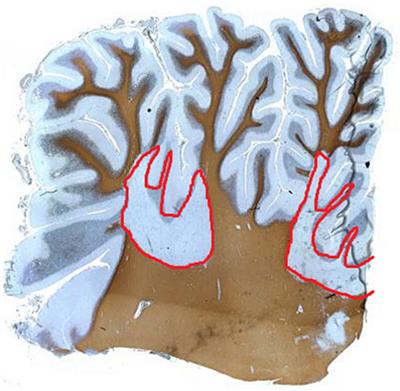The Link Between Multiple Sclerosis & Cerebellar Atrophy
Multiple Sclerosis (MS) is a complex and unpredictable neurological disease that affects millions of people worldwide. While it is primarily characterized by inflammation and demyelination of the central nervous system (CNS), the impact of MS extends far beyond the traditional understanding of the disease. Cerebellar atrophy, a condition involving the degeneration of the cerebellum, has gained attention in recent years as a significant neurological complication of MS. In this article, we will explore the link between multiple sclerosis and cerebellar atrophy, shedding light on the mechanisms, symptoms, and implications of this less-understood aspect of the disease.
Understanding Multiple Sclerosis
Multiple Sclerosis is an autoimmune disease in which the immune system mistakenly attacks the protective myelin sheath that covers nerve fibers within the CNS, leading to inflammation and damage. This damage can disrupt the normal flow of electrical impulses along nerve fibers, causing a wide range of neurological symptoms. The most common symptoms of MS include fatigue, difficulty walking, numbness or tingling, muscle weakness, and problems with coordination and balance. Over time, these symptoms can worsen and lead to significant disability.
The Cerebellum and Its Role
The cerebellum is a critical part of the brain located at the back of the head, just above the brainstem. It plays a crucial role in coordinating voluntary movements, maintaining balance, and fine-tuning motor skills. Additionally, the cerebellum contributes to cognitive functions like attention, language processing, and emotional regulation.
The Link between MS and Cerebellar Atrophy
Cerebellar atrophy is a condition characterized by the degeneration or shrinkage of the cerebellum. This phenomenon has been observed in a significant number of individuals with multiple sclerosis, and research has begun to shed light on the connection between the two conditions.
- Inflammatory Processes: MS is primarily an inflammatory disease, and the inflammatory processes occurring within the CNS can extend to the cerebellum. This inflammation can disrupt the normal functioning of the cerebellum and contribute to its atrophy.
- Demyelination: The demyelination of nerve fibers in the cerebellum, caused by MS, can lead to a loss of communication between neurons. This disruption in signaling can result in impaired coordination, balance, and motor skills, which are characteristic symptoms of cerebellar atrophy.
- Neuronal Damage: In MS, not only the myelin but also the underlying neurons can be damaged. The loss of neurons within the cerebellum can further contribute to its atrophy and functional impairment.
Symptoms of Cerebellar Atrophy in MS Patients
The presence of cerebellar atrophy in individuals with MS can lead to a distinct set of symptoms, including:
- Ataxia: Ataxia refers to a lack of coordination and balance, making everyday movements like walking and reaching for objects challenging.
- Dysarthria: This condition affects speech and results in slurred or poorly articulated speech patterns.
- Tremors: Tremors or shaky movements may occur, particularly when trying to perform fine motor tasks.
- Cognitive Changes: Some individuals may experience changes in cognitive function, such as difficulties with concentration, attention, and problem-solving.
- Fatigue: The increased effort required to perform even simple tasks due to ataxia and other symptoms can contribute to fatigue, a common symptom in both MS and cerebellar atrophy.
Implications and Treatment
The presence of cerebellar atrophy in MS patients can complicate the clinical course of the disease. It may lead to more severe disability and impact the overall quality of life for those affected. Therefore, it is crucial for healthcare providers to recognize and address cerebellar atrophy in MS patients.
Treatment approaches for cerebellar atrophy in MS are often focused on managing symptoms and improving overall function. This may include physical therapy to enhance coordination and balance, medications to address specific symptoms like tremors or spasticity, and speech therapy for individuals with dysarthria.
Conclusion
While the primary hallmark of multiple sclerosis is the inflammation and demyelination of the central nervous system, it is essential to recognize the broader impact of this disease on various parts of the brain. Cerebellar atrophy, a condition involving the degeneration of the cerebellum, is a significant complication that can worsen the clinical course of MS. Understanding the link between multiple sclerosis and cerebellar atrophy is crucial for healthcare providers to provide comprehensive care and improve the quality of life for individuals living with this challenging neurological condition. Further research into the mechanisms underlying this connection may pave the way for more targeted therapies in the future.
Further Reading
- Brain atrophy in multiple sclerosis: mechanisms, clinical relevance and treatment options | Autoimmunity Highlights | Full Text (biomedcentral.com)
- Selective Cerebellar Atrophy Associates with Depression and Fatigue in the Early Phases of Relapse-Onset Multiple Sclerosis | SpringerLink
- Frontiers | Cognitive Decline in Multiple Sclerosis Is Related to the Progression of Retinal Atrophy and Presence of Oligoclonal Bands: A 5-Year Follow-Up Study (frontiersin.org)
- Cerebral Atrophy | National Institute of Neurological Disorders and Stroke (nih.gov)
- Frontiers | Cerebellar Dysfunction in Multiple Sclerosis (frontiersin.org)
ADVERTISEMENT
#cerebellaratrophy #cerebellum #ms #multiplesclerosis #neurologicaldisorder #cognitiveimpairment #ataxia #inflammatoryprocesses #cns #demyelination #neuronaldamage
Andrew Jones is a seasoned journalist renowned for his expertise in current affairs, politics, economics and health reporting. With a career spanning over two decades, he has established himself as a trusted voice in the field, providing insightful analysis and thought-provoking commentary on some of the most pressing issues of our time.







